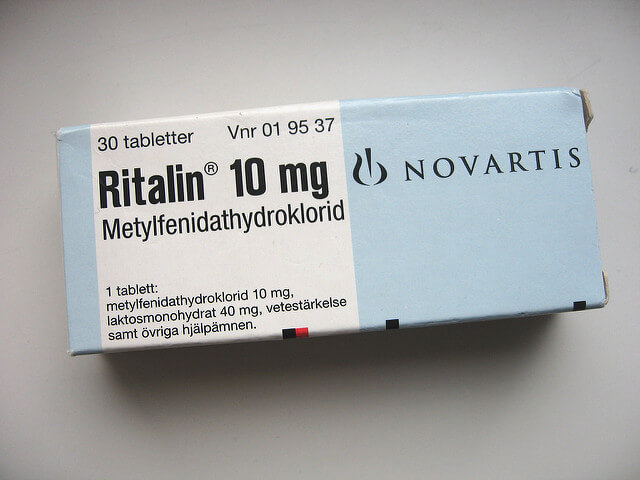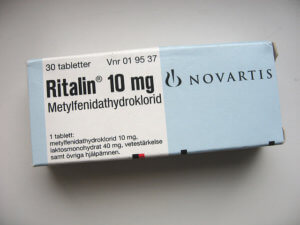From The Wellness Report
and The Michigan Chiropractic Council
Back in April of 1998 the Wellness Report featured information about Michigan ranking third in the nation for Ritalin use – 56% higher than the national average. The October 1998 issue told about the children, newborn through age 3, identified in a study of the Michigan Medicaid program who were diagnosed with ADHD and given Ritalin and various other psychotropic medications.
 (photo: Ritalin 10 mg prescription medication — credit: ADHD CENTER via Flickr)
(photo: Ritalin 10 mg prescription medication — credit: ADHD CENTER via Flickr)
Michigan has made national headlines again, and again it is not good news. On March 21, fourteen year-old Matthew Smith collapsed at his Michigan home while playing with his skateboard. He was pronounced dead shortly after his arrival at the hospital, a death that Oakland County Medical Examiner Ljubisa Dragovic attributed to the boy’s 10 years of Ritalin use.
Matthew died officially of a heart attack, caused by changes in the small blood vessels that supply the heart muscle – changes which would occur gradually over time, and just aren’t seen in the younger population. Two other deaths have been reported in Ritalin users (one in Ohio and one in Texas).
The Nation Taking Notice
Michigan’s headlines have made the press and the medical community take notice of the trends in prescriptions for our nation’s youth. A recent Journal of the American Medical Association study found a three-fold increase in Ritalin prescriptions by doctors for 2 to 4 year-olds from 1991-1995.
The same study found a doubled use of antidepressants such as Prozac in children in the same time period. Another study found that 30% of those children taking an antidepressant (for depression, school phobia, bed wetting or eating disorders) were also taking Ritalin, presumably for ADHD. When they analyzed all Ritalin users, they found that 8% were also taking an antidepressant.
These findings are in addition to the trends showing a sharp increase in use of both types of these drugs by children from 1990-1998. By 1998, 10% of US children aged 6 to 14 years were on Ritalin or other stimulants, as were 1% of preschoolers 1 to 5 years. For the antidepressants (SSRIs like Prozac), 2% of school-aged children and .1% of preschoolers had prescriptions for the drug. Dr. Jerry Rushton of the University of Michigan stated, “I think the safety of these medications – in the young child especially – is not known, and when you take them in combination it’s a whole new level of safety concern.”
One to Watch
A class-action lawsuit has been recently filed against the makers of Ritalin and the support group CHADD (Children and Adults with ADHD), for charges of fraud and conspiracy from 1955 to 1995.
The suit alleges that the pharmaceutical company aided in the creation and perpetuation of the diagnosis ADHD; that it financially supports organizations (like CHADD) that promote and support the implementation of such diagnosis and the use of Ritalin; that they promote Ritalin as the drug of choice among those diagnosed with ADHD; and have generally misled the public as to the significant health risks involved with taking the drug.
Those health risks include, but are not limited to: rapid heart beat, high blood pressure, unusual or irregular heart beat (arrhythmia), heart attack, psychosis, hallucinations, depression, worsening of ADHD symptoms, confusion, hostility, cognitive impairment, nervous habits and jerky movements (tics), nausea, vomiting, abnormal liver function tests, growth problems, weight loss, blurred vision, headaches, involuntary discharge of urine, and withdrawal/rebound symptoms. The press release likens the pattern of practice and improper conduct to asbestos corporate defendants and tobacco companies in other cases.
Interesting Points
Most of the medical profession claims that ADHD is not over-diagnosed. They claim that more children are being diagnosed because we’ve gotten so much better at spotting it.
The interesting thing is that American Academy of Pediatrics re-vamped diagnostic guidelines for ADHD in May of this year. Did they create these new guidelines because we were already so good at diagnosing, or because they saw a problem with these trends?
All of the assessments in the guidelines are subjective, since there are no diagnostic tests proven to be positive indicators. This means parents’, teachers’, and doctors’ perceptions determine the fate of these children. Most health-care professionals balk at the claims that Ritalin is unsafe, yet lawmakers are being urged to fund research into childhood behavioral problems and ways to treat them.
If Ritalin were really that safe, why would it matter how many children were on it? One of the things they plan on addressing is labeling these prescriptions with dosage information for children (currently there are no formal dosage guidelines).
And as far as the Ritalin/antidepressant mixing, it’s interesting to note that the symptoms treated by antidepressants can all be found on Ritalin’s side-effect list.
Do these children need help? Why not start with a healthy nervous system. Chiropractic adjustments would give these kids a chance at coping with life subluxation-free.
—————————————————————————
The Wellness Report is compiled and distributed by Dr. Teri Stockwell and Melanie Cruse.
planetc1.com-news @ 9:35 am | Article ID: 961518923





Comments are closed for this article!